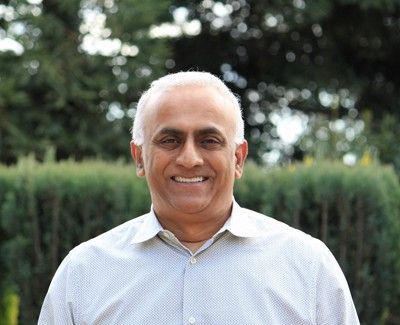LeanTaaS CEO: The Inefficiencies Plaguing Healthcare
In the first part of this interview, the executive describes how clunky scheduling systems are hurting hospitals.

Mohan Giridharadas, MBA, doesn’t always talk like a population health enthusiast. At one point in his conversation with Healthcare Analytics News™, he referred to his firm’s disinterest in “the drama” associated with hundreds of unique patients and physicians.
But his work speaks for itself. The company he founded and helms, LeanTaaS, claims to have saved millions of dollars for healthcare systems across the country. The name stands for “Lean Transformation as a Service,” and the organization’s growing reach suggest there is something to it.
After its birth in 2010, LeanTaaS received its first major boost 3 years later, when Stanford approached it to help optimize its infusion centers. The company analyzed their use—times when the centers were busy, slow periods, appointments that ran over schedule—and built scheduling algorithms that would predict how to best use those spaces.
The effort paid off. By August 2017, their systems had infiltrated nearly 80 infusion clinics, including those at leading health systems like MD Anderson Cancer Center, Memorial Sloan Kettering Cancer Center, and NewYork-Presbyterian Healthcare System. Afterward, Giridharadas said, LeanTaaS “doubled down” on healthcare, looking for more opportunities to optimize services in the field.
One key to his company’s approach is its willingness to look outside healthcare for ways to improve it. A conversation with Giridharadas focuses as much on airlines, shipping, and car navigation systems as it does doctors and patients. He thinks understanding the processes and mindsets that exist in other fields will help healthcare catch up.
“If you go after inefficiencies 1 at a time and crush them, you can create enormous amounts of capacity in the health system,” he said. “That’s our mission, and we’re ahead.”
You were an analyst at McKinsey for 18 years, focused on healthcare operations. What did you learn?
I got to help service providers across many industries think about how to apply lean. In a manufacturing and supply chain environment, it’s inanimate widgets on an assembly line; in a service environment, it’s patients experiencing care under complex conditions.
One realization was that most organizations that try to do process improvement do so on the backs of Excel spreadsheets. They rely on them to calculate turnaround time, wait time, capacity, nursing staff, whatever it is. Excel is middle school math. If you use middle school math, you’ll get middle school answers.
And that’s the case in healthcare?
Healthcare is a series of inefficiencies. Hospital services interfere with each other. The doctor will always try to expedite the lab results or pull a radiologist out of a meeting to read something. They try to solve the problem by coordinating between the services rather than optimizing them.
Every node in the delivery chain—clinics, labs, pharmacy, chemotherapy, operating rooms—has this problem. Patients spend most of their time waiting. In a 1 hour appointment, only 15 minutes are value-adding, where someone is taking their temperature or giving them meds.
Hospitals try to coordinate their way to heaven, with nurse navigators and patient care navigators to navigate their way through the various services. It doesn’t make sense.
What caused this problem?
Think about the evolution of health systems from 2009 onward, with the Health Information Technology for Economic and Clinical Health Act. Congress created pressure for all health systems to use electronic health records and exchange information. That created the gold rush for the Epics, Cerners, and Allscripts of the world. Their modus operandi, rightfully so, was to capture every patient encounter and put it into a database.
But they also made shortcuts in the scheduling. They treated everything like a resource—an infusion chair, a lab, an imaging machine, and a doctor—which were all put in resource grids.
Imagine if a racquet club’s rules were, ‘Show up late and you’ll still have your tennis court, and you don’t need to stop at the top of the hour. Play until you’re tired.’ It would fall apart. But this is what goes on in health systems: They’ve used a deterministic framework to solve what is essentially random, with none of the mathematical sophistication that other industries use.
Because the hospitals have chosen this resource-based, tennis court mindset, the entire underpinning mathematics are a foundation of Jello.
The second part of this interview will be published tomorrow, January 11.
Children’s hospitals face complex challenges dealing with disasters
April 18th 2025Pediatric hospitals deal with different factors in weather-related events and other emergencies. Terri Wilson of the Children’s Hospital Association talks about the challenges and the need for more planning and support.
Telehealth faces a looming deadline in Washington | Healthy Bottom Line podcast
February 12th 2025Once again, the clock is ticking on waivers for telemedicine and hospital-at-home programs. Kyle Zebley of the American Telemedicine Association talks about the push on Congress and the White House.